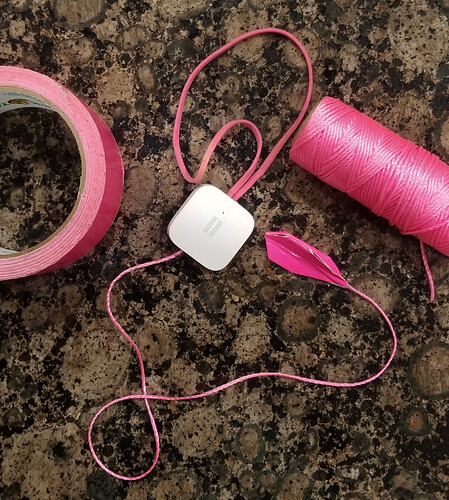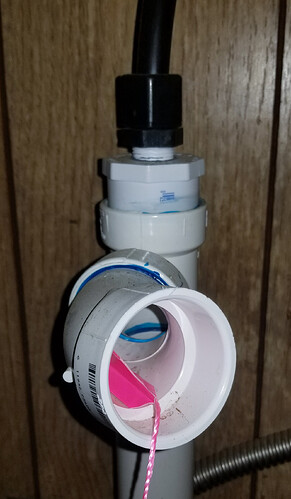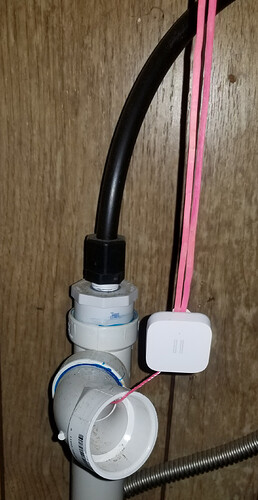Thank you all for the suggestions. I combined them into a solution that I think will work. Rube Goldberg would be proud.
I created a string with a "tail" assembly to go down the backflush drain. The string is attached to the "bacon" motion sensor which is suspended by a rubber band.
I am expecting that the backflush stream will tug on the string tail attached to the motion sensor stretching the rubber band and triggering the motion sensor.
Now, we wait.





